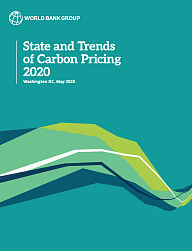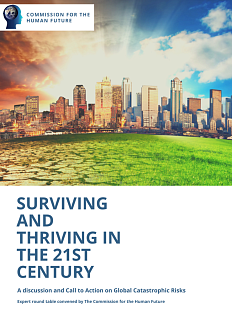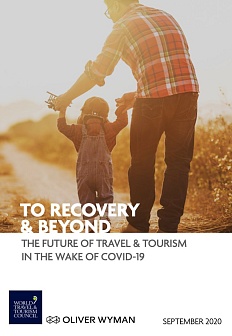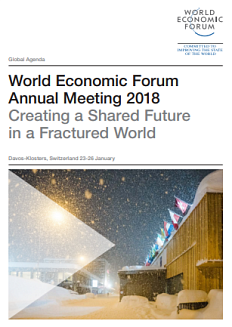This report covers the latest developments and trends in carbon pricing initiatives around the world. It provides detailed updates to carbon pricing initiatives (either in operation or those coming online), and flags broader issues in the design ofand debate over these instruments.
A notable addition to this years edition is the section on carbon crediting mechanisms, as they have started to occupy a substantial part of the market in recent years. These mechanisms provide the opportunity for public and private participation in generating credits to be used for offsets and climate finance globally and serve as an important option for reducing emissions.
The Roscongress Foundation presents the salient points of the publication accompanied by fragments of broadcasts of relevant panel discussions from the business programme of international events held by the Roscongress Foundation.
The pandemic is testing the resilience of carbon pricing initiatives. Despite the social and economic upheaval, many jurisdictions and private entities are accelerating their efforts on climate action.
Prices in some established ETSs have fallen in line with reduced economic activity resulting from COVID-19 restrictions. Furthermore, some jurisdictions have delayed measures to strengthen their carbon pricing instruments and have extended compliance deadlines due to the restrictions. Key meetingsmost notably COP 26as well as international aviation and maritime meetings, have been postponed, delaying decisions on the rules around international transactions and markets. Additionally, COVID-19 has led to increased uncertainty for the demand for international credits with airlines questioning the impact of COVID-19 on their offsetting obligations under the Carbon Offset and Reduction Scheme for International Aviation (CORSIA).
COP 25 highlighted the urgency and need to ramp up ambition as Parties work on updating their nationally determined contributions (NDCs). Furthermore, the Chilean COP presidency announced that 120 Parties to the United Nations Framework Convention on Climate Change (UNFCCC) are working towards achieving net zero CO2 emissions by 2050 as part of the Climate Ambition Alliance. As of April 1, 2020, Denmark, France, New Zealand, Sweden and the UK have built on this pledge and enshrined a net zero CO2 emissions target into legislation, while Suriname and Bhutan are already carbon negative. In addition, 15 subnational regions, 398 cities, 786 businesses and 16 investors have also indicated that they are working towards achieving net zero emission targets.
Despite carbon prices increasing in many jurisdictions, they remain substantially lower than those needed to be consistent with the Paris Agreement.
The High-Level Commission on Carbon Prices estimated that carbon prices of at least US$4080/tCO2 by 2020 and US$50100/tCO2 by 2030 are required to cost-effectively reduce emissions in line with the temperature goals of the Paris Agreement. As of today, less than 5 percent of GHG emissions currently covered by a carbon price are within this range6 with about half of covered emissions priced at less than US$10/tCO2e, and the IMF calculates the global average carbon price is only US$2/tCO2.7 The appropriate carbon price will be determined by local conditions, the role the carbon pricing instrument should play, as well as the impact of other climate policies and technological progress. Equally, jurisdictions may choose to implement a tax or an ETS with an initially low price that rises over time as companies become familiar with the new pricing policy. Nevertheless, prices remain too low similar to those reported in the previous two years.
The past few years saw a surge of interest in crediting, with forestry at the forefront. Crediting activity is starting to shift beyond projects generated from the Kyoto mechanisms.
42 percent of the crediting market over the past five years stems from forestry. In line with a broader interest in nature-based solutions, this may be partly driven by the significant potential for these projects to reduce emissions cost effectively and their ability to generate additional co-benefits. However, traditional crediting activities in the industrial gases, renewables and fugitive emission sectors still make up a large share of the market.
Crediting has often been dominated by the Clean Development Mechanism (CDM). However, following the crash of the CDM market price in 2012, crediting activity stabilized. Companies remain active in the voluntary market, with credits from independent crediting mechanisms responsible for almost two-thirds of all credits issued in 2019. Equally, governments are developing domestic crediting mechanisms. Not only do these projects generate local benefits but also give companies some flexibility in complying with the domestic carbon pricing regulations. Only two nationally operated mechanisms (in Japan and the Republic of Korea) source international mitigation outcomes. Ongoing discussions around the baseline for the CORSIA, the international aviation offset mechanism that mandates international airlines to surrender eligible emissions reduction credits, may also increase demand for crediting.
Greater transparency and agreement on robust standards for crediting mechanisms are needed to ensure environmental integrity. A growing number of companies are using internal carbon pricing to reduce emissions across their value chains.
The upswing in the number of regional, national, subnational and independent crediting mechanisms also brings the challenge of ensuring consistency across the various mechanisms and that each credit generated represents a ton of CO2e mitigated. The environmental integrity of emissions savings and the avoidance of double counting are key to the credibility of systems.
In 2019, about 1,600 companies disclosed that they currently use internal carbon pricing or that they anticipate doing so within two years. With an increasing number of companies committing to net zero targets and growing investor pressure, the use of internal carbon pricing to reduce supply chain emissions is likely to grow in the future.
For more information about construction as a sector with a sizeable share in many economies, rising level of digitalization, and shifts in consumer sentiment in real estate, please see the Environment, Supply chain management, StayHomeEconomy and Tax system.






